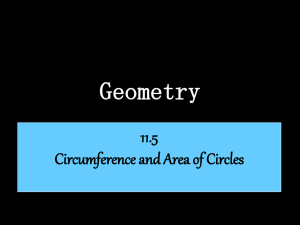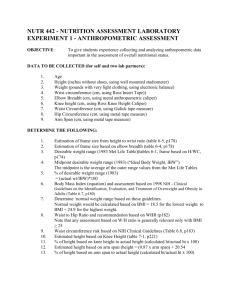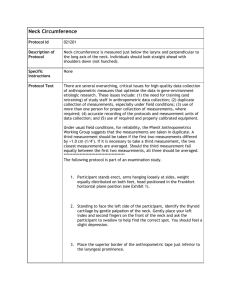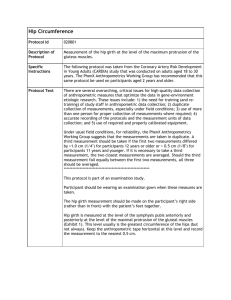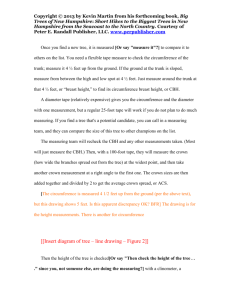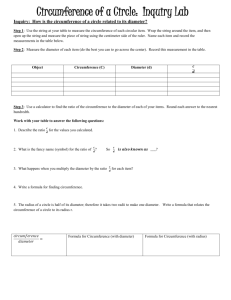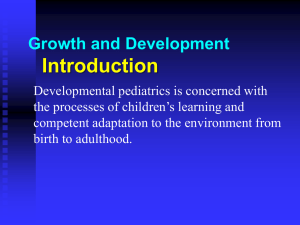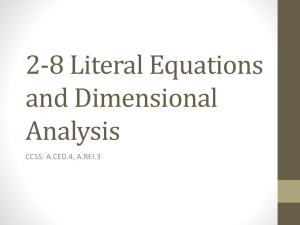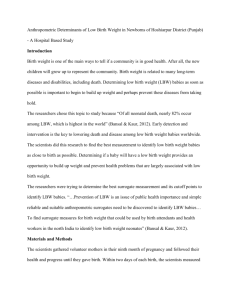Child Head Circumference
advertisement
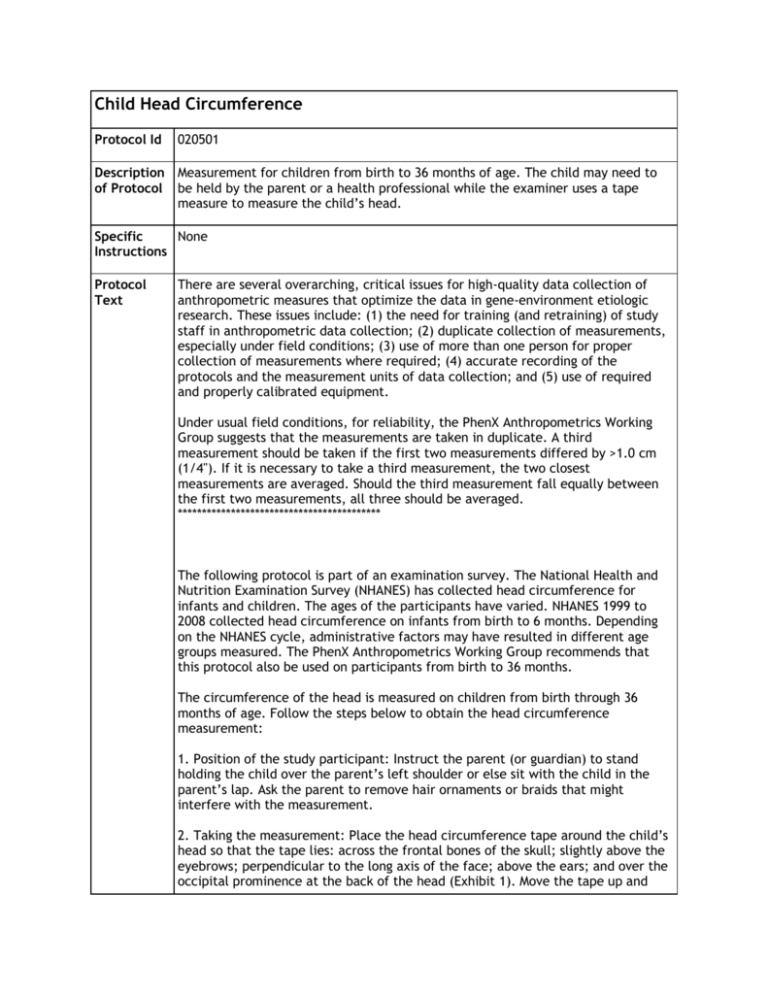
Child Head Circumference Protocol Id 020501 Description Measurement for children from birth to 36 months of age. The child may need to of Protocol be held by the parent or a health professional while the examiner uses a tape measure to measure the child’s head. Specific None Instructions Protocol Text There are several overarching, critical issues for high-quality data collection of anthropometric measures that optimize the data in gene-environment etiologic research. These issues include: (1) the need for training (and retraining) of study staff in anthropometric data collection; (2) duplicate collection of measurements, especially under field conditions; (3) use of more than one person for proper collection of measurements where required; (4) accurate recording of the protocols and the measurement units of data collection; and (5) use of required and properly calibrated equipment. Under usual field conditions, for reliability, the PhenX Anthropometrics Working Group suggests that the measurements are taken in duplicate. A third measurement should be taken if the first two measurements differed by >1.0 cm (1/4"). If it is necessary to take a third measurement, the two closest measurements are averaged. Should the third measurement fall equally between the first two measurements, all three should be averaged. ****************************************** The following protocol is part of an examination survey. The National Health and Nutrition Examination Survey (NHANES) has collected head circumference for infants and children. The ages of the participants have varied. NHANES 1999 to 2008 collected head circumference on infants from birth to 6 months. Depending on the NHANES cycle, administrative factors may have resulted in different age groups measured. The PhenX Anthropometrics Working Group recommends that this protocol also be used on participants from birth to 36 months. The circumference of the head is measured on children from birth through 36 months of age. Follow the steps below to obtain the head circumference measurement: 1. Position of the study participant: Instruct the parent (or guardian) to stand holding the child over the parent’s left shoulder or else sit with the child in the parent’s lap. Ask the parent to remove hair ornaments or braids that might interfere with the measurement. 2. Taking the measurement: Place the head circumference tape around the child’s head so that the tape lies: across the frontal bones of the skull; slightly above the eyebrows; perpendicular to the long axis of the face; above the ears; and over the occipital prominence at the back of the head (Exhibit 1). Move the tape up and down over the back of the head to locate the maximal circumference. Tighten the insertion tape so that it fits snugly around the head and compresses the hair and underlying soft tissues. Measure the circumference to the nearest 0.1 cm. 3. Record the result. Remove the head circumference tape. Exhibit 1. Head circumference tape position Interpretation of findings: Current growth charts, including head circumference, can be found on the National Center for Health Statistics, Centers for Disease Control and Prevention website. Selection Rationale The child head circumference protocol from the NHANES 2007-08 was selected as best practice methodology and most widely used protocol to assess child growth and development. Source Centers for Disease Control and Prevention (CDC), National Center for Health Statistics (NCHS). (2007-2008). National Health and Nutrition Examination Survey Anthropometrics Procedure Manual. Hyattsville, MD: U.S. Department of Health and Human Services, Centers for Disease Control and Prevention. Language English, Spanish Participant Infants from birth to 36 months of age Personnel and Training Required Technicians who have experience working with young children and who should be trained in the basic techniques of anthropometric measurements. Equipment Needs Flexible measurement tape Standards Standard Name ID Common Data Elements (CDE) Child Head Circumference Value 2793421 CDE Browser Logical Observation Identifiers Names and Codes (LOINC) PhenX - child head circum protocol 62406-4 LOINC General References None Protocol Type Physical Measurement Derived Variables None Source Requiremen Requirement Category ts Average time of greater than 15 minutes in an unaffected individual Required No Average time of greater than 15 minutes in an unaffected individual Major equipment No This measure requires a specialized measurement device that may not be readily available in every setting where genome wide association studies are being conducted. Examples of specialized equipment are DEXA, Echocardiography, and Spirometry Specialized requirements for biospecimen collection No This protocol requires that blood, urine, etc. be collected from the study participants. Specialized training This measure requires staff training in the protocol methodology and/or in the conduct of the data analysis. No
